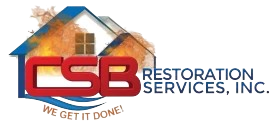When it comes to maintaining a safe and healthy home environment, mold remediation plays a critical role. Mold is a type of fungus that thrives in damp, humid environments, and its presence can pose significant risks to both your property and your health. The process of mold remediation involves identifying, containing, and removing mold growth from affected areas to restore a clean and healthy living space. Whether you are undertaking a routine inspection or dealing with a mold crisis, understanding the remediation process is essential for effective home improvement and maintenance.
Why Mold Remediation Is Important
Mold growth isn’t just an unsightly problem; it can lead to severe structural damage and pose health risks like respiratory issues, allergies, and skin irritation. Prolonged exposure to mold spores can exacerbate these conditions, especially for individuals with preexisting health concerns such as asthma. Ignoring mold can also depreciate your home’s value and result in costly repairs in the long run.
Signs You Need Mold Remediation
Identifying mold early is crucial for timely mold remediation. Common signs include:
- Musty odors.
- Discolored walls or ceilings.
- Visible mold patches.
- Increased allergy symptoms among household members.
- Persistent dampness in certain areas of your home.
If you notice any of these indicators, it’s time to consult professionals to assess the extent of the problem.
Steps in the Mold Remediation Process
1. Inspection and Assessment
The first step in mold remediation is a thorough inspection by trained professionals. They use specialized tools like moisture meters and thermal cameras to identify mold growth, assess the damage, and pinpoint the source of moisture. This step is essential to ensure all affected areas are addressed.
2. Containment
Once the mold is located, containment measures are put in place to prevent spores from spreading to unaffected areas. This may involve:
- Sealing off the area with plastic sheeting.
- Using negative air machines to maintain airflow control.
- Shutting down HVAC systems in the affected areas.
Containment ensures that the mold does not compromise other parts of your home.
3. Mold Removal
The next phase is removing the mold. The method used depends on the surface and severity of the infestation:
- Non-porous surfaces: Mold can usually be cleaned using antimicrobial treatments.
- Porous materials: Items like drywall, carpets, and insulation often need to be removed and replaced as mold can deeply embed itself. Professionals use HEPA vacuums and other advanced tools to ensure thorough removal.
4. Cleaning and Disinfection
After the mold is removed, the area is cleaned and disinfected to eliminate any lingering spores. Special cleaning agents and air scrubbers are used to purify the air and surfaces, creating a mold-free environment.
5. Repair and Restoration
Depending on the extent of the mold damage, repairs may be necessary. This could involve:
- Replacing drywall or insulation.
- Repainting walls.
- Installing new carpets or flooring. This step ensures your home is restored to its original condition or better.
Preventing Mold Growth
While mold remediation resolves current issues, prevention is key to avoiding future infestations. Here are some tips:
- Control Humidity Levels: Use dehumidifiers and maintain indoor humidity below 50%.
- Address Leaks Promptly: Repair any leaks in roofs, windows, or plumbing to prevent water buildup.
- Ensure Proper Ventilation: Use exhaust fans in kitchens and bathrooms and ensure your home is well-ventilated.
- Regular Inspections: Schedule periodic inspections to catch potential mold issues early.
DIY vs. Professional Mold Remediation
Some homeowners may attempt DIY mold removal for small areas, but this approach has limitations:
- DIY: Suitable for minor surface mold. Requires gloves, masks, and mold-cleaning solutions.
- Professional: Necessary for larger infestations or when mold affects HVAC systems or structural components. Professionals bring the expertise, tools, and safety measures required for thorough remediation.
Conclusion
Mold remediation is more than just removing visible mold—it’s about addressing the root cause, preventing recurrence, and ensuring your home remains safe and healthy. From inspection to restoration, every step in the process is vital to effectively tackle mold and maintain the integrity of your home. For comprehensive results, professional remediation services are the best option to ensure a clean, mold-free living space.
FAQs
1. What is mold remediation?
Mold remediation is the process of identifying, containing, removing, and cleaning mold growth in a property. It also includes steps to prevent future mold growth.
2. How much does professional mold remediation cost?
The cost varies depending on the size of the affected area, the extent of damage, and local rates. On average, homeowners can expect to pay between $500 and $6,000.
3. Can I do mold remediation myself?
Small mold issues can often be handled with DIY methods, but extensive infestations require professional expertise to ensure complete removal and safety.
4. How long does mold remediation take?
The duration depends on the size and severity of the mold problem. Small jobs may take a day, while larger projects can take several days to a week.
5. Is mold remediation covered by insurance?
Homeowners’ insurance policies may cover mold remediation if the mold was caused by a covered peril, such as a burst pipe. It’s best to check your policy or consult your insurer for details.
